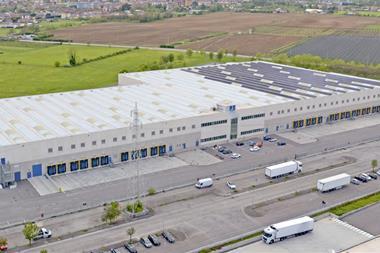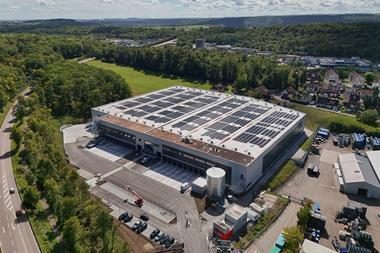German investors consider the government’s plan to boost funding and investments for affordable housing a positive step to reinvigorate a stagnating residential property sector, but are calling for more vigorous measures to solve the crisis.
This week the government unveiled a 14-point plan to further support investments to build affordable and climate-friendly living spaces, as well as help the real estate and construction industry navigate challenges. The government also held a meeting with associations and representatives of states and municipalities.
Increasing costs for building materials resulting from Russia’s war against Ukraine, higher interest rates and a lack of skilled workers have “massively slowed down” investments of the housing and construction industry, the government said while laying out its plans. High interest rates and costs are also causing insolvencies of project developers.
Commerz Real’s CEO Henning Koch told IPE Real Assets that the government’s package of measures is likely to have a positive impact, contributing potentially to alleviate the housing shortage in Germany in the medium term.
But, as a whole, it is not sufficient to revive the housing construction industry, which has almost come to a standstill, and to put a stop to the rapid rise in rents, he said.
“I wished more, because the hurdles for synergies between project development and construction of affordable housing on the one hand, and profitability for investors on the other, are very high, even with this package of measures,” Koch added.
The plan is a first step in the right direction, but on its own will not lead to the construction of apartments on a significant scale in 2024, added Marcus Cieleback, chief urban economist at Patrizia.
They will not improve the risk-return profile of residential investments. “This is exactly where the problem lies – despite the government’s announcements the measures will not have a significant effect here,” Cieleback said.
Some political parties are calling to further regulate the market – to protect tenants, for example – and this does not create confidence that a stable environment will be built in medium term, which essential for long-term investors, he added.
Cieleback also believes that many aspects of the package point in the right direction, but it is certainly not the “big hit” leading to build many homes in the next 18 to 24 months.
“The specific design of many measures announced still has to be worked out politically. This is not an ‘immediate measure’ that quickly solves the causes of the housing shortage,” he added.
The German government this week held a meeting with associations and representatives of states and municipalities, but it was boycotted by the Federal Association of German Housing and Real Estate Companies and the owners’ association Haus & Grund.
Increasing costs for building materials, higher interest rates and a shortage of skilled workers have slowed investment in housing, the government said while laying out its plans.
High interest rates and costs are also causing insolvencies of project developers, and large listed developer Vonovia has put the construction of around 60,000 apartments on hold.
“Rising interest rates, and the resulting attractive offers for alternative investment options, lead to completely different return requirements from investors, so that the measures [of the government] must meet the needs of both project developers and investors,” Koch said.
Cieleback added: “Any further slump in new construction activity would be fatal, given the striking housing shortage that already exists in metropolitan areas.”
Bureaucracy, regulatory requirements and energy-efficiency standards are more demanding in Germany than in some neighboring countries, Cieleback said, making the creation of new living space even more expensive.
The German cabinet has admitted its failure to reach the self-imposed target of building 400,000 new apartments per year, including 100,000 publicly funded. The government wants to cut the time for granting building permits for affordable housing to help accelerate construction and has provided further incentives for families to help with homeownership.
Other measures in the 14-point plan include the introduction of a “degressive depreciation for residential buildings”, already part of the Growth Opportunity Act, of 6% per year, for a period of six years, to quickly refinance investments and create incentives to support the real estate industry.
Moreover, investors wanting to convert commercial real estate spaces into living spaces can access a €480m funding programme over the next two years.
“In our view, promoting the conversion of no longer needed commercial space into residential property is an important measure,” said Koch. “Older office space in outskirts will attract in the future less and less interest from potential tenants.”
He added that the promotion of social housing was an important signal coming from the government, but simplifying funding systems would have been at least as helpful as the financial support, because in Germany there are a “rather several hundred” different systems.
Cieleback said it was disappointing that the issues of value-added tax and real estate transfer tax, for example, had not been addressed.
But, he added: “The fundamentals of most important residential real estate markets [in Germany] are robust, the appetite is fundamentally there, and investors will come back.”


















